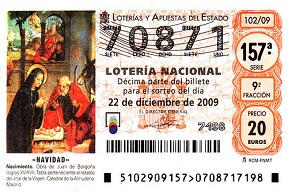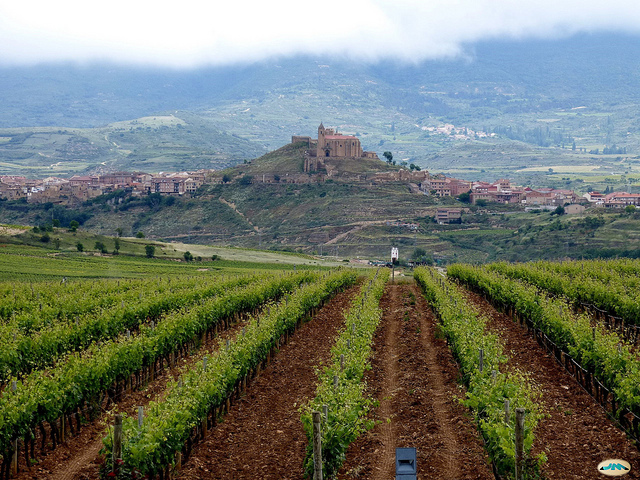Three factors seem to characterise my many visits to the magnificent city of Seville: glorious blue skies, beautiful women and the sound of neighbourhood bands practicing for some upcoming festivals in Seville. And at least part of my observations stand in good company considering the words of Lord Byron in his epic work ‘Don Juan’ in which he states:
In Seville was he born, a pleasant city, Famous for oranges and women, — he Who has not seen it will be much to pity, So says the proverb — and I quite agree; Of all the Spanish towns is none more pretty, Cadiz perhaps — but that you soon may see; — Don Juan’s parents lived beside the river, A noble stream, and called the Guadalquivir.
Whilst I’ve been fortunate enough to stay in numerous ‘barrios’ all around the city as well as in neighbouring towns where I’ve stumbled upon local celebrations it is the heart of historic Seville which attracts visitors from the world who come to experience two of the city’s greatest festivals: Holy Week (Semana Santa) and the April Fair (Feria de Abril).
Top 10 Festivals in Seville
Semana Santa: Holy Week in Seville
Holy week, or Easter week as many prefer, begins on Palm Sunday and continues through until Easter Sunday every year. It consists of processions of beautiful floats carrying religious statues adorned with flowers and carried by one of the city’s 57 brotherhoods which represent the church where the statue resides during the year. Two of the most famous of these floats are the ones carrying ‘La Macarena’ and ‘Jesús del Gran Poder’.

It’s great honour to carry one of these floats and the unfortunate cancellation of processions due to heavy rain on occasions has brought grown men to tears in the knowledge that they’ll never again have the opportunity to carry their parish’s float during Semana Santa as the following year’s carriers will be from the next generation.
Preparations for the big day continue throughout Lent which goes some way to explain why I’m so accustomed to the sound of band music when visiting the city. Seville is officially full during Holy week but if you do manage to find accommodation there then you should find a good spot on the official route which runs along Calle Sierpes to the Cathedral via Avenida de la Constitución. Official times and routes are available from the tourist information office.
Fería de Abril: Seville’s April Fair
Two weeks after the solemnity of Holy week the city gears up for one of Andalucía’s biggest fiestas as the party loving people of Seville head for the city’s fairground to dance flamenco and consume vast quantities of sherry over a week long fiesta. There are more than 1000 ‘casetas’ (private party tents) where friends meet up for the festivities. Don’t worry if you aren’t fortunate enough to be invited to one of these get-togethers are there are public areas where anyone can go and get into the spirit of the event.
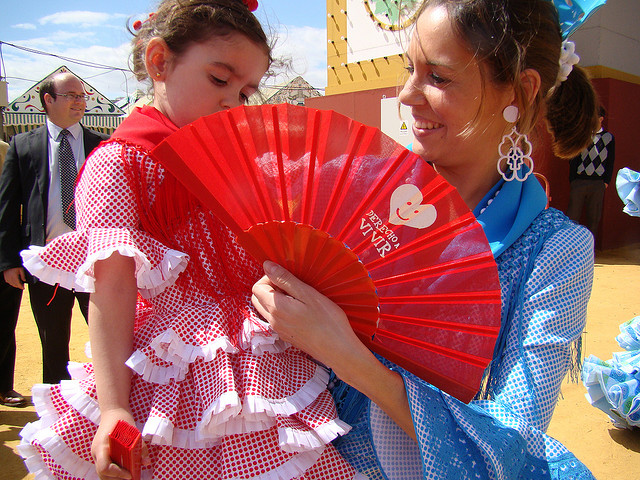
It is here that you’ll fully appreciate my reference to the beautiful women of Seville as they dance the night away in this year’s flamenco dresses. The week begins on a Monday night with the switching on of the fairground’s lights at midnight ending the following Sunday with a massive firework display. Away from the fairground the whole city feels like it’s ‘in fiestas’ with bullfights taking place every evening at the city’s bullring (Plaza de Toros de la Maestranza).
Read more about La Feria de Abril
El Rocío Pilgrimage
Strictly speaking this is a festival celebrated in the province of Huelva in the tiny town of El Rocio on the edge of the Doñana National Park. It is a pilgrimage which attracts an estimated one million people (yes – really!). The date of the festival is fifty days after Easter so varies annually with pilgrims arriving from a number of starting points around Andalucia.
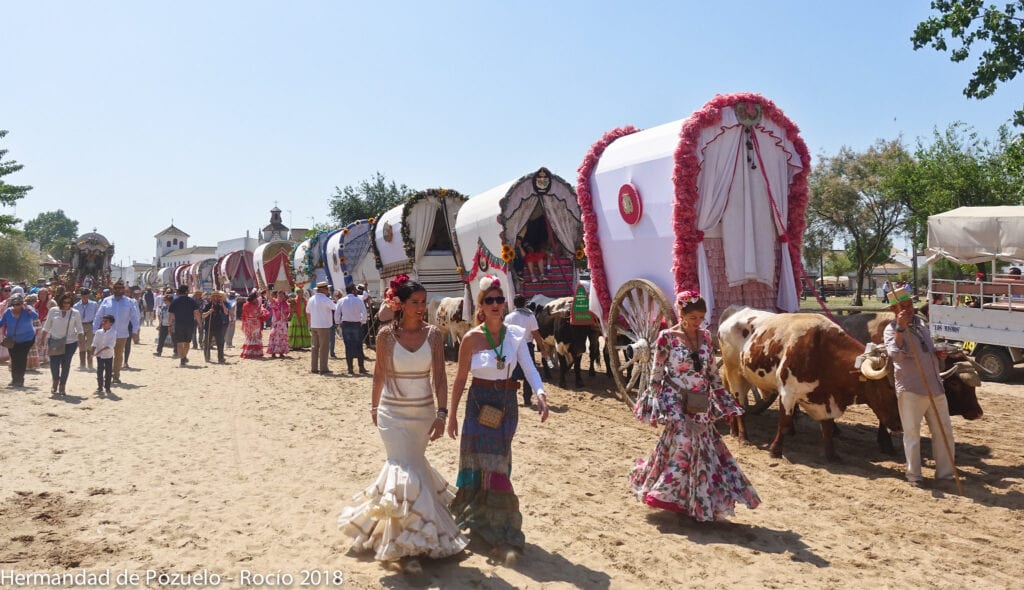
The reason I include it here in this list of Seville festivals is because one of those starting points is the Iglesia de El Salvador church in Seville (Plaza del Salvador) where you might be fortunate enough to get a sight of the El Rocio pilgrims preparing for their journey dressed in flamenco gear with beautiful horse drawn carriages. Better still, get yourself to the village of Almonte in Huelva which is the final destination of the Romería del Rocío and enjoy the festivities which take place at the culmination of the pilgrimage.
Festival of Corpus Christi
The festival of Corpus Christi is a major religious celebration in Seville with deep historical roots. It takes place 60 days after Easter, always on a Thursday. The religious festival celebrates the Eucharist in early June with a city-wide procession. Floats carrying religious statues and tapestries leave Seville Cathedral and march through the streets. Many buildings and balconies are decked out in colourful banners, tapestries and flowers to celebrate the holy day. Locals lay out elaborate rose petal carpets along the procession route to be trampled by the floats in a show of devotion.
Velá de Santiago y Santa Ana
The most famous of Seville’s ‘barrios’ is Triana which is not only lauded as the birthplace of flamenco but is also the traditional home of the city’s fishermen. During the last week of July every year the people of this neighbourhood and beyond (everyone in Seville loves a good knees up) get together to celebrate the festival of Velá de Santa Ana in honour of Triana’s patron saint.
From across the river on the side of the bullring you can look across the Guadalquivir and see Calle Betis which is the street around which the celebrations revolve. Take a stroll over in the evening and enjoy some great tapas at the bars that are set up and join in with the locals as impromptu flamenco dances take place.
A novelty of the festivities is ‘la Cucaña’ which is a competition in which participants must walk along a greasy pole sticking out of a riverboat and pick up a flag that has been placed at the end of it. Those who manage it get a nice prize, the rest get wet!
Bienal Flamenco Festival
The city of Seville breathes flamenco music and dance. It is evident wherever you look in this capital of Andalucia. Understandably, therefore, the city is the chosen venue of the biennial ‘Bienal de Flamenco’ which takes place in the month of September and represents one of the world’s most important celebrations of flamenco attracting many of the top musicians and dancers. During this three week festival there are all kinds of events associated with the art of flamenco in venues all over the city. For future dates check the official Bienal Flamenco website.
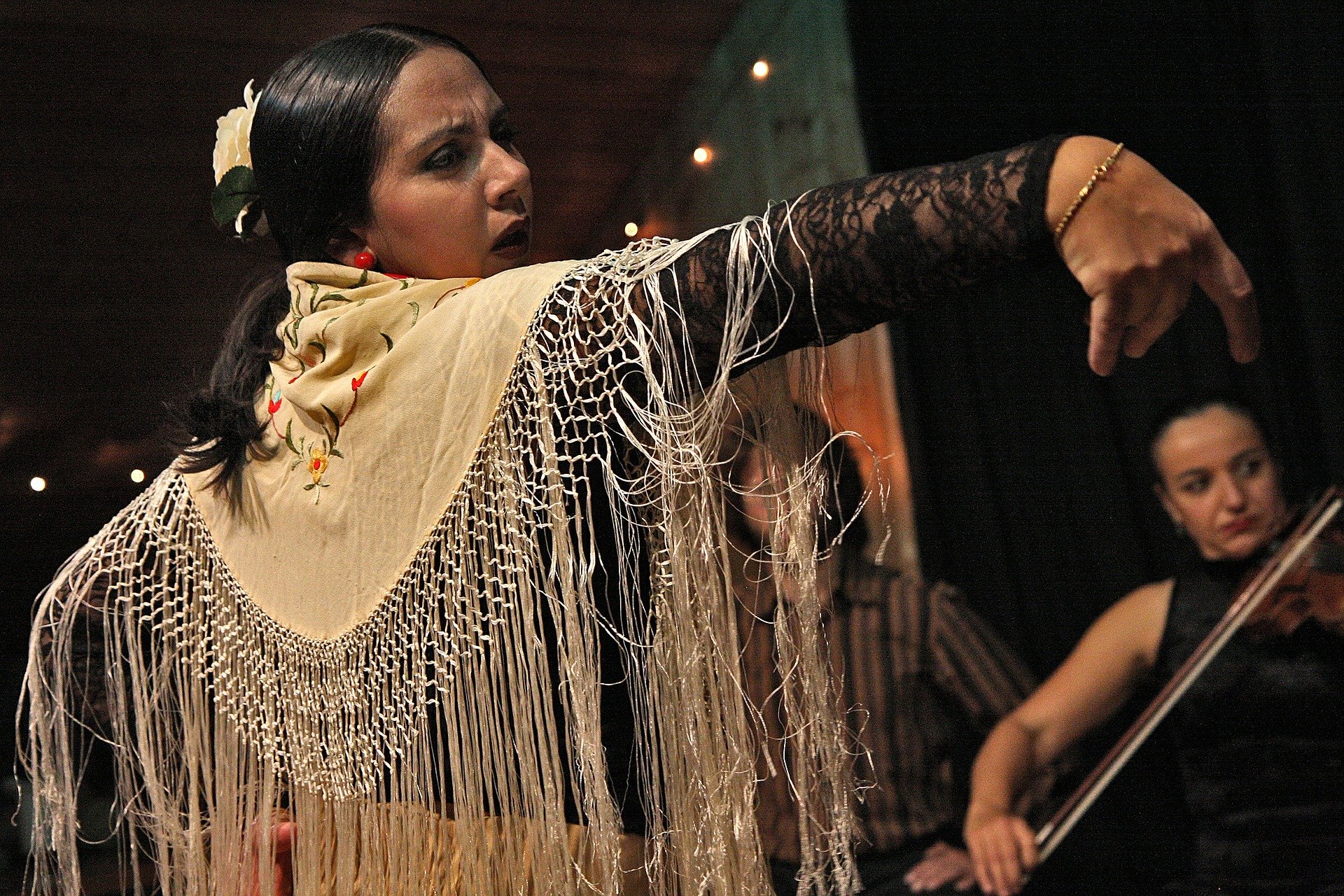
Todos Los Santos (All Saints’ Day)
All Saints’ Day is a national holiday celebrated on November 1st with solemn rituals to honour deceased relatives and saints. As is the custom everywhere, many Sevillanos take flowers to decorate the graves of their relatives in preparation for the day. On the evening before, locals snack on roasted chestnuts and seasonal sweets like ‘Huesos de Santo’ . This traditional sweet made of marzipan is a little macabre as it is shaped like bones and skulls. Religious celebrations also take place at the city’s churches and cathedral.
Christmas Festivals in Seville
The end of year holiday period in Seville pretty much follows the events described in our Christmas in Spain article. Specific to Seville, celebrations begin as early as 8th December with the feast of ‘La Inmaculada Concepción’ when the city’s Christmas lights are switched on.
Look out for some of the intricate nativity scenes which are set up in a number of the city’s main squares and pay a visit to the impressive ‘Feria del Belén’ near the Cathedral on Calle Fray Ceferino which sells all kinds of artisan decorations for your Christmas tree. A number of other seasonal markets also crop up such as the one in Plaza de la Encarnación and the smaller food market next to La Puerta de Jerez.
The night of 5th January is a big deal for the children of Seville as the Three Kings (Los Reyes Magos) roll into town bearing gifts. A huge procession departs from the University early in the evening travelling at a snail’s pace as it tours the city. On board the floats are the Three Kings and many other people whose job is to throw sweets into the crowd. Check the route and departure times at the local tourist information office.
Provisional Dates of Festivals in Seville
We have only given approximate dates of Seville festivals and holidays below as Easter and associated events are moveable. Also you might find that when a festival falls on a Sunday the following day becomes the public holiday. We cannot be responsible for disruption to travel plans should any of these dates be changed. Therefore, we strongly recommend that you confirm these dates with an official Spain travel agency before confirming your travel dates.
You can contact the Seville Municipal Tourist Office through their website at http://www.visitasevilla.es.
January:
1st: New Year
6th: Three Kings
February:
28th: Día de Andalucía
March/April:
24th to 31st: Semana Santa (Holy Week)
(2025 Dates: April 13th to April)
April:
14th to 20th: Feria de Abril (April Fair)
May/June:
1st: Fiesta del Trabajo (Labour Day)
30th: Corpus Christi (June 19th in 2025)
July:
21-26th: Velá de Santa Ana
August:
15th: Día de la Asunción de la Virgen (Assumption Day)
October:
12th: Fiesta Nacional de España (Día de la Hispanidad)
November:
1st: Día de Todos los Santos (All Saints Day)
December:
6th: Día de la Constitución
8th: Día de la Inmaculada (Immaculate Conception)
24th: Nochebuena (Christmas Eve)
25th: Navidad (Christmas Day)
31st: Nochevieja (New Year’s Eve)

